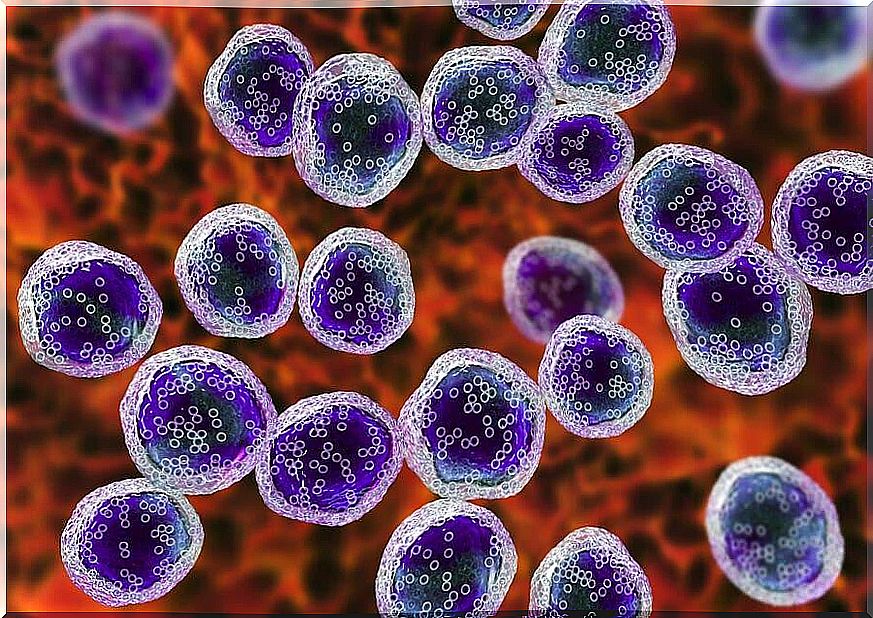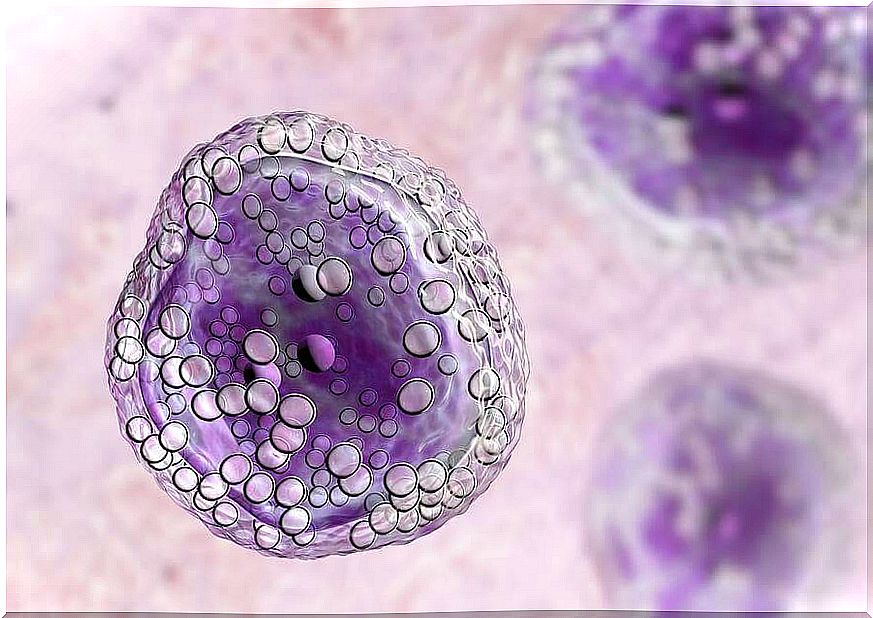Sézary’s Syndrome

Sézary syndrome is a manifestation of a lymphoma cutaneous attack. Lymphomas are malignant tumors of the body’s defense cells, especially those grouped in lymph nodes.
The human body’s defense cells are white blood cells, and within them we have different varieties. One of these varieties are lymphocytes, which are subdivided into B lymphocytes and T lymphocytes. In the case of Sézary syndrome, the affected cells in the skin are T lymphocytes.
The disease is very rare. Worldwide, an estimated new case appears per year for every ten million inhabitants. It is more common in men than women and appears especially after age 50 years.
Prognosis and causes of Sézary syndrome
The progression of Sézary syndrome is unfortunately rapid. In a series of studies carried out to calculate the survival of patients diagnosed with the disease, it was found that the vast majority are cured when it is detected at an early stage, but only 40% survive five years after diagnosis if they are in more advanced stages. .
Therefore, it is understood that early detection is essential to ensure patient survival. In cases where the disease has taken over organs other than the skin, the life prognosis is about eight months.
The cause of this form of lymphoma is not fully known. Scientists have found some genetic changes that may be associated, but nothing is definitive. It has also been linked to viruses such as HTLV-1, cytomegalovirus and Epstein Barr virus. An infection with these microorganisms can trigger cancer.
Symptoms and Diagnosis of Sézary Syndrome
Sézary syndrome is very difficult to diagnose. It can start out as a fungal skin condition that looks common. Doctors are confused and diagnosis is delayed.
When the disease progresses, the characteristic sign appears, which is erythroderma. This means that the skin takes on an intense reddish hue over large areas of the body. The erythroderma of this disease occurs with an itchiness that can be unbearable.
Other symptoms that accompany erythroderma include:
- Alopecia: hair loss .
- Ectropion: The eyelids curl in on themselves.
- Onychodystrophy: changes in nails, from shape to size and color.
- Lymphadenopathy: inflammation of the lymph nodes and ducts.
- Hepatomegaly: the liver increases in size.
- Splenomegaly: increased spleen size.

Diagnosis
When you suspect Sézary’s syndrome, your doctor will probably ask you to:
- Physical examination: looking for the complete extension of the skin lesions and identifying the presence of possible swollen lymph nodes.
- Blood count: It is a simple laboratory blood test to see how white blood cells are, how many they are, how they are distributed and what shapes they have.
- Skin Biopsy : Samples of the affected skin are taken for observation under a microscope. A specialist in pathological anatomy makes observations in a laboratory and reports what he sees. The biopsy will be conclusive for the diagnosis, as it will tell you exactly what the condition is.
- Images: if it is confirmed that it is Sézary’s syndrome, CT scans and MRIs will be needed to know the extent of the pathology.
Sézary’s cell
The syndrome is named after one of the two scientists who discovered the disease. Sézary and Bouvrain were the ones who, in 1938, described a disease in which those affected had the symptoms we have already explained and also had very rare cells when their blood was observed under a microscope.
These rare cells that are now known as Sézary cells are deformed T cells. They can be small, large and very large cells, depending on their size under the microscope. Some studies have found that having the cell variant too large represents the worst prognosis for the patient.
These are not cells that are only present in Sézary syndrome. It has been found to be present in other diseases, and it has been stipulated that there must be over a thousand of them in a laboratory count so that we can talk about the lymphoma in question.

Treatment of Sézary’s Syndrome
The treatment of choice for Sézary syndrome is photopheresis. Photopheresis is a procedure whereby blood is removed from the body, treated with ultraviolet light, and reinserted into the body. It is a modality that is very well tolerated by patients and, in those who respond correctly, it has a shelf life of eight years.
If photopheresis does not work, chemotherapy with drugs such as doxorubicin or gemcitabine is chosen. If there is still no favorable response, radiotherapy and stem cell transplantation can be evaluated.
Experience with the disease has shown that there are certain individuals with a worse prognosis. Are those who:
- They are in a very advanced stage of the syndrome
- They are over sixty years old.
- Contain very large Sézary cells in their blood
Because of its difficult diagnosis, it is important to schedule a medical appointment in case of any skin condition. If, after treatment, there is no improvement in the clinical picture, seek a doctor again. It is preferable to do some additional tests to clarify doubts and conclude the diagnosis.









